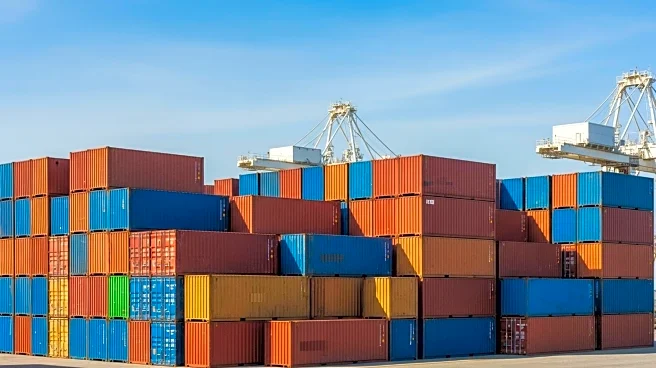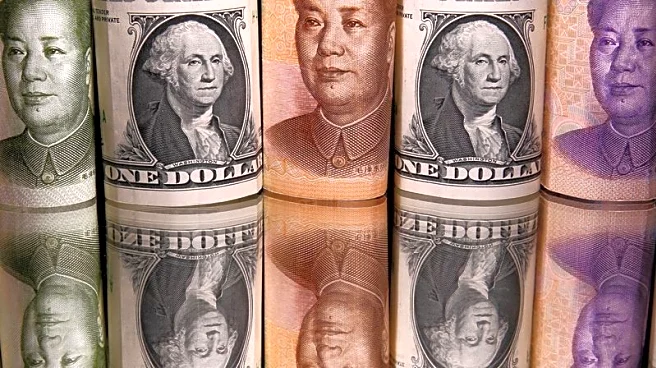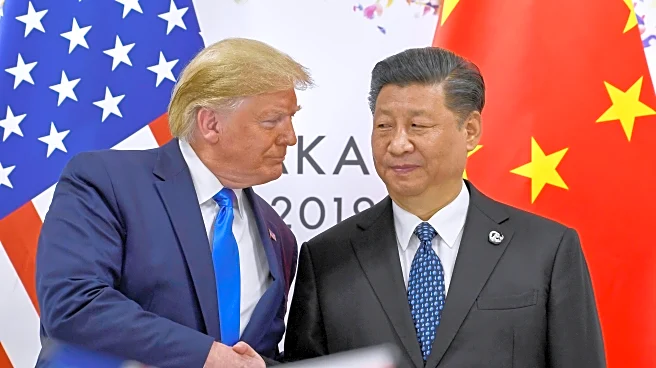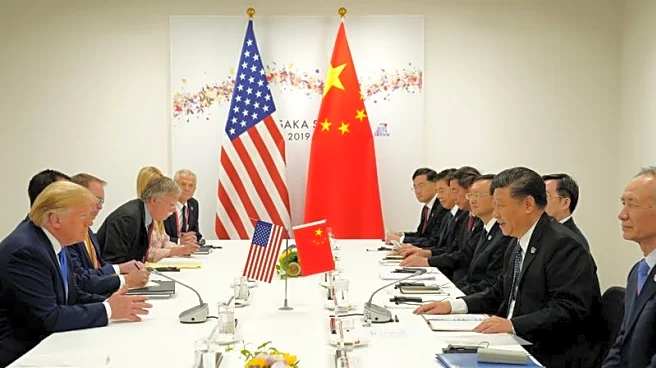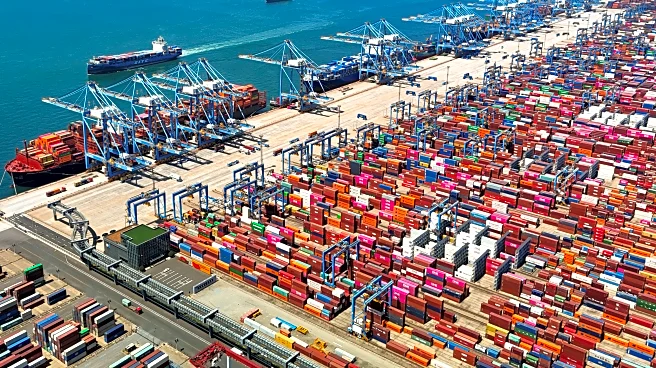What is the story about?
What's Happening?
The U.S. dollar rebounded from an early selloff on Monday as investors anticipated a potential softening in Washington's approach to the ongoing trade war with China. This recovery follows President Trump's announcement of 100% tariffs on Chinese imports, which had previously sparked fears of economic instability. The dollar index, which measures the dollar's strength against a basket of six currencies, edged higher to 99.002. Market participants are hopeful that President Trump may adopt a more conciliatory tone, as indicated by his recent comments on social media, suggesting a willingness to assist China rather than harm it. This development comes amid political changes in France and Japan, which have affected the euro and yen respectively.
Why It's Important?
The stabilization of the U.S. dollar is significant as it reflects investor sentiment regarding the trade relationship between the U.S. and China, two of the world's largest economies. A more tempered approach by Washington could alleviate fears of a prolonged trade war, which has the potential to disrupt global markets and economic growth. The dollar's recovery also impacts various sectors, including commodities and cryptocurrencies, which experienced volatility following the tariff announcement. A stable dollar is crucial for international trade and investment, influencing exchange rates and economic forecasts worldwide.
What's Next?
Market participants will closely monitor any further statements or policy changes from President Trump regarding trade with China. The potential for negotiations or a reduction in tariffs could lead to improved relations and economic stability. Additionally, upcoming holidays in the U.S. and Japan may affect market liquidity, adding another layer of complexity to the situation. Investors will also watch for reactions from China, which has urged the U.S. to resolve differences through dialogue rather than threats.
Beyond the Headlines
The ongoing trade tensions highlight the broader geopolitical dynamics between the U.S. and China, with implications for global supply chains and economic alliances. The situation underscores the interconnectedness of global markets and the impact of political decisions on economic stability. Long-term shifts in trade policies could lead to changes in manufacturing and export strategies, affecting industries reliant on international cooperation.
AI Generated Content
Do you find this article useful?




